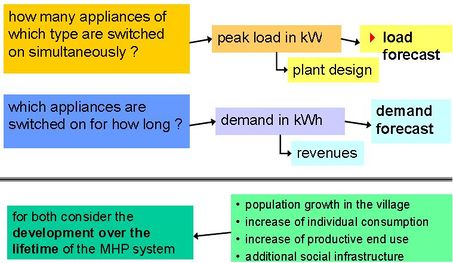Knowledge fuels change - Support energypedia!
For over 10 years, energypedia has been connecting energy experts around the world — helping them share knowledge, learn from each other, and accelerate the global energy transition.
Today, we ask for your support to keep this platform free and accessible to all.
Even a small contribution makes a big difference! If just 10–20% of our 60,000+ monthly visitors donated the equivalent of a cup of coffee — €5 — Energypedia would be fully funded for a whole year.
Is the knowledge you’ve gained through Energypedia this year worth €5 or more?
Your donation keeps the platform running, helps us create new knowledge products, and contributes directly to achieving SDG 7.
Thank you for your support, your donation, big or small, truly matters!
Social Implications of Load Management
Overview
Load management is the process of balancing the supply of electricity on the network with the electrical load by adjusting or controlling the load rather than the power station output. This can be achieved by direct intervention of the utility in real time or by time clocks, or by using special tariffs to influence consumer behavior.[1]
Definition of the Problem
Example: Stand-alone hydropower schemes are isolated grids. Those are often characterised by low average energy demand but high load peaks. As smaller a grid becomes as stronger such fluctuations appear. This is particularly the case with community electrification schemes in developing countries where average demand can be as low as 15 to 20% of the peak demand.
This has two main disadvantages:
- Turbine, generator, controller, transmission cable are designed for the load peak but used only partly (efficiency loss).
- Temporary shortage of electricity may occur if the load peak reaches a plants capacity. This may create customer dissatisfaction.
- During times of low demand, the power from the hydro is only partially utilised, available energy is not used. This reduces the benefits to the recipients and the overall cost-effectiveness of a scheme.
Power Demand and Productive Use Possibilities
Power demand and possibilities of productive end use is to be accessed during feasibility studies. The primary use of micro-hydropower in the rural context of the country is usually for household lighting. In order to optimise the use and financial viability of the micro-hydropower plant, the installed capacity should be governed by household demand.
Productive usage of electricity ideally complement the lighting use. Machinery that can be operated during the non - lighting hours, increases efficiency. The total capacity of productive uses under operation should be limited to the installed capacity, which is governed by the lighting demand. However, other approaches to sizing the plant capacity may also be proposed, provided that the financial viability can be demonstrated
Usually demand grows over time. New households will be connected and new appliances used (radio, TV, stoves...). The available upper level of available power is defined by site conditions. Sizing of an mhp is also a question of available financial resources.
To access the power requirements, the number of beneficiary households and their average power demand is to be determined. This is optimally done in discussions with the community. Make clear that more power in household connections will increase the price (= higher tariffs). Identify and encourage productive usage of electricity. Check marketability and feasibility of potential ideas. Thus may create additional income to the community. Identify time periods of potential machinery used. The prospective entrepreneurs willing to install the various end uses should be identified at the feasibility stage in detail.
If the local mhp potential is not fully required at this time, a site can be built for later extension.
Forecast and Management of Load and Demand
Why demand forecast:
- planning and sizing of MHP components
- ideally electricity production covers the demand at any time,
- precautions in case of insufficient hydropower potential (load management, demand side management, back-up solutions)
- revenues depend on electricity consumption
Forecast should be made for all user groups:
- domestic consumption (no. of households and wattage of connection)
- social infrastructure: pumping drinking water, schools, street lighting, health centers, mosques, churches, etc.
- productive use (milling and other agricultural processing, kiosks, welding and carpentry workshops, battery charging, sewing, etc.)
- Usually demand grows over time.
- new households will be connected and new appliances used (radio, TV, ...)
- power cuts due to overload may disrupt a community based management or payment moral
- productive use often requires machinery machinery has much higher energy demand than consumptive use
- electric heating/cooking is usually too consumptive to be available for all households. public use may be a solution
The available upper level of available power is defined by site conditions. Sizing of an mhp is also a question of available financial resources.
If available power in an existing scheme is exceeded:
- introduce a tariff which encourages energy saving (e.g. pay per watt => energy efficiency lamps)
- reduce connections / load; check for "illegal" connections
- introduce alternating power shifts on different line branches
- introduce strict load management (overloading a mhp rarely occurs from lighting alone)
How to Make a Forecast:
Load and Demand Side Management by Reducing Peaks and/or Demand
- sensitising consumers/ awareness raising (e.g. by energy-saving bulbs, promotion of productive end use, etc.)
- creating special tariff system, e.g. combined with installation of current limiters
Further Information
- Improving Efficiency and Accessibility of Micro-Hydro Power Through Intelligent Load Management (case study from Uganda)
- Grid Portal on energypedia
- Hydro Portal on energypedia
- Hydro Battery Charging Station
References
- ↑ http://en.wikipedia.org/wiki/Load management




















